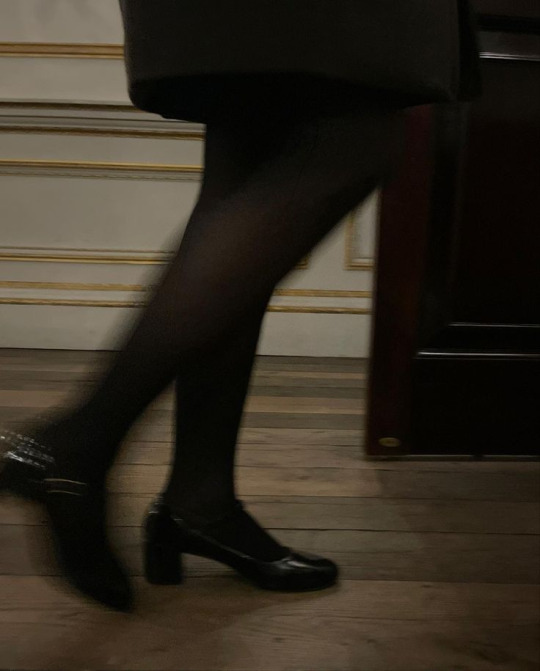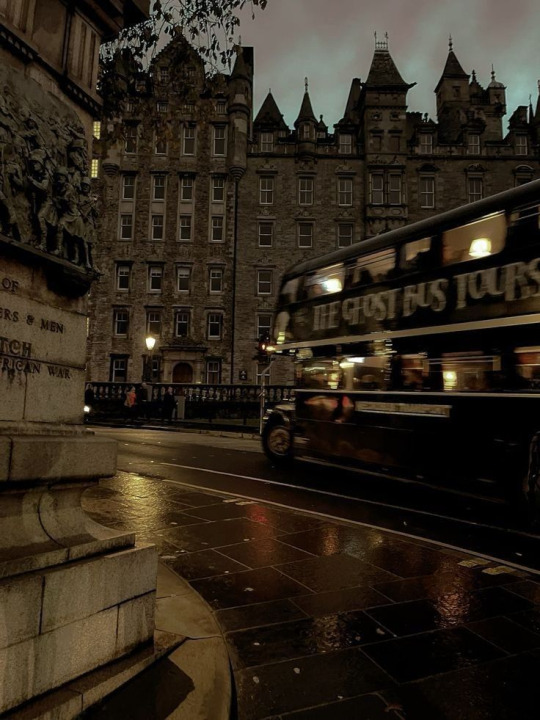“𝘈 𝘮𝘰𝘳𝘣𝘪𝘥 𝘭𝘰𝘯𝘨𝘪𝘯𝘨 𝘧𝘰𝘳 𝘵𝘩𝘦 𝘱𝘪𝘤𝘵𝘶𝘳𝘦𝘴𝘲𝘶𝘦 𝘢𝘵 𝘢𝘭𝘭 𝘤𝘰𝘴𝘵𝘴.” 🍂🕯️ 𝐝𝐚𝐫𝐤 𝐚𝐜𝐚𝐝𝐞𝐦𝐢𝐜𝐢𝐚𝐧 📚 𝐫𝐞𝐚𝐝𝐞𝐫 🖋️𝐩𝐨𝐞𝐭 🫶🪩 𝐬𝐰𝐢𝐟𝐭𝐢𝐞𝘲𝘶𝘰𝘵𝘪𝘯𝘨 𝘖𝘴𝘤𝘢𝘳 𝘞𝘪𝘭𝘥𝘦 24/7
Don't wanna be here? Send us removal request.
Text
“The books that the world calls immoral are books that show the world its own shame.” - Lord Henry, A picture of Dorian Gray (chapter 19)
3 notes
·
View notes
Text

of course he's read the secret history!!
7K notes
·
View notes
Text
Reviewing Critically Acclaimed Works
Art, in all its forms, offers us windows into the human experience. Whether it's through the written word or music, artists find unique ways to capture our joys, sorrows, desires, and fears. In this blog post, I'll explore the works of five extraordinary creators who have deeply influenced literature and music across generations: William Shakespeare, Sylvia Plath, Jane Austen, Taylor Swift, and Lana Del Rey. Each of these artists explores themes of love, identity, heartbreak, and self-discovery in their own distinctive way, leaving a profound impact on their audiences.
Reviewing Robert Frost: The Depth and Beauty of Simplicity
When it comes to American poetry, few names are as universally recognized or as beloved as Robert Frost. With his plainspoken yet profound verses, Frost has earned his place in the pantheon of great American poets, celebrated not only for his mastery of language but for his ability to capture the universal experience in the most seemingly ordinary moments. From the rural landscapes of New England to the complexities of human choice and emotion, his poems invite readers into a world that is both familiar and deeply introspective.
William Shakespeare: The Master of Human Complexity
Notable Works: Hamlet, Macbeth, Romeo and Juliet, King Lear, A Midsummer Night’s Dream
William Shakespeare, the "Bard of Avon," remains one of the most influential writers in the history of the English language. His works, whether comedies, tragedies, or histories, delve into the intricate depths of human nature. Shakespeare's ability to capture universal emotions—love, jealousy, ambition, revenge—has made his plays timeless.
What distinguishes Shakespeare is his ability to create characters who feel fully human, layered with conflicting emotions and desires. Hamlet’s indecision, Lady Macbeth’s guilt, Juliet’s passion—they are not just characters; they are mirrors to the complexities of the human soul. The beauty of his poetry, coupled with his exploration of the human condition, ensures that his works remain relevant even after centuries.
For modern readers, Shakespeare’s works also offer fertile ground for adaptation and reinterpretation. His themes transcend time, and his characters often find new life in contemporary settings, whether on stage or screen.
William Shakespeare: The Master of Human Complexity
Notable Works: Hamlet, Macbeth, Romeo and Juliet, King Lear, A Midsummer Night’s Dream
William Shakespeare, the "Bard of Avon," remains one of the most influential writers in the history of the English language. His works, whether comedies, tragedies, or histories, delve into the intricate depths of human nature. Shakespeare's ability to capture universal emotions—love, jealousy, ambition, revenge—has made his plays timeless.
What distinguishes Shakespeare is his ability to create characters who feel fully human, layered with conflicting emotions and desires. Hamlet’s indecision, Lady Macbeth’s guilt, Juliet’s passion—they are not just characters; they are mirrors to the complexities of the human soul. The beauty of his poetry, coupled with his exploration of the human condition, ensures that his works remain relevant even after centuries.
For modern readers, Shakespeare’s works also offer fertile ground for adaptation and reinterpretation. His themes transcend time, and his characters often find new life in contemporary settings, whether on stage or screen.
Sylvia Plath: The Poetess of Darkness and Desire
Notable Works: The Bell Jar, Ariel, Lady Lazarus, Tulips
Sylvia Plath’s writings reveal a deeply emotional and confessional voice that continues to resonate with readers, particularly women, decades after her tragic death. Plath's poetry, known for its rawness and psychological intensity, often explores themes of mental illness, identity, and self-destruction. Her novel, The Bell Jar, a semi-autobiographical account of a young woman’s descent into mental illness, has become an iconic exploration of existential despair and the pressures placed on women by society.
Her poetry in Ariel is both strikingly beautiful and haunting. Lines like “I am vertical. / But I would rather be horizontal” capture the dissonance of a mind at war with itself. Plath’s imagery is intense, often combining the visceral and the symbolic to explore dark emotions like rage, isolation, and grief. Her works offer a window into the turbulence of the human psyche, showing the complexities of a woman struggling with societal expectations and personal demons.
Sylvia Plath’s impact on contemporary poetry cannot be overstated, and her works have inspired countless writers and readers to examine the depths of mental health, gender, and the painful pursuit of self-understanding.
Jane Austen: The Mistress of Social Observation and Romance
Notable Works: Pride and Prejudice, Sense and Sensibility, Emma, Persuasion
Whereas Shakespeare explored the chaos of human emotions, Jane Austen's novels examine the subtleties of social interaction and the complex dance of courtship and class. Austen’s novels, often considered "romantic," are much more than love stories—they are insightful critiques of the societal norms and gender expectations of her time.
Austen’s wit is legendary. In novels like Pride and Prejudice, she masterfully portrays the tensions between personal desire and societal duty. Elizabeth Bennet’s sharp tongue and Darcy’s brooding introspection are beloved for their depth, and their eventual love story is satisfying not just because of the romantic chemistry but because it represents a gradual journey of mutual respect and self-awareness.
Austen’s works remain perennially relevant, partly because they explore timeless themes: class, morality, gender, and the pursuit of happiness. Her biting humor, well-rounded characters, and insights into human nature make her an enduring figure in literature, and her works continue to inspire adaptations and retellings in books, television, and film.
Taylor Swift: The Modern Poet of Love and Loss
Notable Works: Red, 1989, Folklore, Midnights
Taylor Swift’s evolution as an artist has been nothing short of remarkable. Starting as a country-pop ingénue, she has transformed into one of the most influential singer-songwriters of her generation. What makes Swift’s music stand out is her mastery of storytelling. Her songs are miniature narratives, capturing the nuanced emotions of young love, heartbreak, and personal growth. In Red, she sings about the intense, burning passion of love lost, while in Folklore and Evermore, she ventures into more introspective and melancholic territory, exploring themes of nostalgia, loss, and reflection.
Taylor Swift’s lyricism is often compared to literary works. Her ability to convey vulnerability and complexity in her songs, such as “All Too Well” and “The Archer,” has earned her recognition as a modern poet. Her songs are reflective, not only on her own experiences but also on universal feelings of joy, regret, and longing.
Swift’s ability to adapt her sound with each album—from the synth-pop exuberance of 1989 to the indie-folk of Folklore—keeps her music fresh and relevant. She has become a cultural icon, not just for her musical prowess but for her courage in owning her narrative and evolving with each passing year.
Lana Del Rey: The Queen of Cinematic Melancholy
Notable Works: Born to Die, Ultraviolence, Norman Fucking Rockwell!, Chemtrails over the Country Club
Lana Del Rey’s music is a haunting blend of nostalgia, glamour, and melancholy. With her cinematic soundscapes and ethereal voice, Del Rey has carved out a space in popular music that evokes both beauty and despair. From the orchestral grandeur of “Video Games” to the confessional edge of “Mariners Apartment Complex,” her work captures a dark, dreamy atmosphere that feels both timeless and contemporary.
Del Rey’s songs often explore themes of love, lust, tragedy, and Americana, wrapped in a haunting sense of longing and regret. Her characters are often trapped in a world of unattainable desires, self-destructive tendencies, and melancholic reveries. Born to Die became an instant cultural touchstone, and albums like Norman Fucking Rockwell! showcase her lyrical sophistication and her ability to tap into universal feelings of disillusionment and beauty.
Lana’s music has been both lauded and criticized for its romanticization of problematic relationships, but what is undeniable is her ability to convey the tension between dreamlike allure and painful reality. She has created an aesthetic that is both seductive and sorrowful, resonating with listeners who find solace in her haunting melodies and poignant lyrics.
Conclusion: The Tapestry of Human Experience
Each of these artists—Shakespeare, Plath, Austen, Swift, and Del Rey—has offered a unique lens through which we can examine our world and our emotions. Shakespeare's timeless exploration of the human condition, Plath's haunting confessions, Austen's biting social commentary, Swift’s evocative storytelling, and Del Rey's cinematic melancholia all remind us of the power of art to speak to our deepest truths.
Whether through the written word or music, these creators have captured the complexity of love, identity, longing, and despair. Their works continue to resonate with audiences because they capture the universal experiences that define us as humans. Their ability to weave emotion, character, and narrative with such depth ensures that their art will continue to inspire, challenge, and console for generations to come.
The Grammys Race
As the music industry gears up for the 2025 Grammy Awards, anticipation is high for what promises to be another year of stellar nominations. The eligibility period for the upcoming Grammys officially closed on August 30, 2024, leaving the final contenders on the table. With a diverse pool of artists making waves this year, many are eager to see which stars will be recognized across various categories.
A number of artists are expected to dominate the nominations, including Sabrina Carpenter, Chappell Roan, and Charli XCX, who all had breakout moments in 2024. Carpenter's infectious hit "Espresso" from her album Short n’ Sweet has turned heads, securing her a spot in the pop category and a strong chance for Best New Artist . Roan, with her album The Rise and Fall of a Midwest Princess, continues to see growing success, positioning herself for nominations in both general and pop categories. Charli XCX's Brat became a key fixture of the "brat summer" phenomenon, gaining significant traction and potentially earning her long-awaited Grammy recognition . Additionally, industry heavyweights like Beyoncé and Taylor Swift are poised for big moments, with Beyoncé’s Cowboy Carter pushing genre boundaries and Swift’s The Tortured Poets Department continuing her streak of chart topping success . The 67th Annual Grammy Awards will be held on February 2, 2025, and it promises to be a thrilling event filled with surprises as these and other artists vie for the industry's highest honors.


#literature#lyrics#poetry#poets#songwriters#writing#critically acclaimed works#critics#taylor swift#lana del rey#sylvia plath#robert frost#william shakespere#blog#books & libraries#classics#grammys#pulitzers#books#songs#music#song writing
3 notes
·
View notes
Text
William Shakespeare or Taylor Swift?
The William Shakespeare or Taylor Swift trend is a comparison of the two artists' work and perspectives, and whether they should be taught together in English class:
Similar themes
Both Shakespeare and Swift explore love in all its shades, including heartbreak, growth, and intimacy. They also both present themselves as vulnerable to industry pressures and rivals, and dwell on issues of power.
Similar artistic styles
Some say that Shakespeare and Swift share a nuanced view of romance, and that their artistry, experiences, and perspectives are striking.
Teaching together
Some say that teaching Shakespeare's Sonnets and Swift's Midnights together can be valuable because it requires close attention and careful articulation of what is similar and what is not.
Contemporary Shakespeare
Some say that Swift is a contemporary Shakespeare, and that the “Swiftspeare” link via Sonnets is solid.
A real poet
A scholar who became a "Swiftie" says that Swift is a real poet, and more than just high-class showbiz.
Some examples of comparisons between Shakespeare and Swift include:
Sonnet 8, 18, 143, and 147: Students can analyze the “turn” or concluding couplet in these sonnets, and compare them to songs on Midnights.
Sonnet 129 and Bigger than the Whole Sky: These poems express intense feeling poetically.
Sonnet 29 and Sweet Nothing: Both celebrate intimacy as a defense against the pressures of the public world.
High Infidelity and Sonnet 138: These poems consider truth in relationships.
Links:
youtube
youtube
#literature#lyrics#poetry#taylor swift#william shakespere#william shakespeare or taylor swift#quizz#buzzfeed#writing#pop culture#kit connor#Rachel Zegler#Youtube
2 notes
·
View notes
Text
Personal favorites- poets and artists
Personal favourites- poets and artists
Oscar Wilde
Oscar Fingal O'Fflahertie Wills Wilde was an Irish poet and playwright. After writing in different forms throughout the 1880s, he became one of the most popular playwrights in London in the early 1890s.
Some of his famous works include, “A Fragment”, “The Ballad of Reading Gaol”, and more.
Taylor Swift
Taylor Alison Swift is an American singer-songwriter. Known for her biographical songwriting, artistic reinventions, and cultural impact, Swift is a leading figure in popular music and the subject of widespread public interest.
Some of her famous works include, “folklore”, “The Tortured Poets Department”, and more.
Lana Del Rey
Elizabeth Woolridge Grant, known professionally as Lana Del Rey, is an American singer and songwriter. Her music is noted for its cinematic quality and exploration of tragic romance, glamour, and melancholia, with frequent references to pop culture and 1950s–1970s Americana.
Some of her famous works include, “Violet Bent Backwards Over Grass” “Norman Fucking Rockwell”, and more.
LORDE
Ella Marija Lani Yelich-O'Connor, known professionally as Lorde, is a New Zealand singer and songwriter. She is known for her unconventional style of pop music and introspective songwriting. Lorde expressed interest in performing at local venues in her early teens.
Some of her famous works include, “Melodrama” “Pure Heroine”, and more.
Sylvia Plath
Sylvia Plath was an American poet, novelist, and short story writer. She is credited with advancing the genre of confessional poetry and is best known for The Colossus and Other Poems, Ariel, and The Bell Jar, a semi-autobiographical novel published shortly before her suicide in 1963.
Robert Frost
Robert Lee Frost was an American poet. Known for his realistic depictions of rural life and his command of American colloquial speech, Frost frequently wrote about settings from rural life in New England in the early 20th century, using them to examine complex social and philosophical themes.
Some of his famous works include: “The Road Not Taken”, “Fire and Ice”, and more.
Viginia Woolf
Adeline Virginia Woolf was an English writer. She is considered one of the most important modernist 20th-century authors. She pioneered the use of stream of consciousness as a narrative device. Woolf was born into an affluent household in South Kensington, London.







#literature#poetry#poets#writing#books & libraries#classics#songwriters#taylor swift#oscar wilde#robert frost#lana del rey#lorde#sylvia plath#virginia woolf#books#reading#music#writers#blog
1 note
·
View note
Text
Separating the art from the artist
The question between an artist and his work has long been a matter of discussion and most especially in literature. Can we appreciate a book or poem without regard to the personal views, ethics, or actions of its author? This question becomes real when the artist's life or beliefs counter modern values or your personal morals. "Separating the art from the artist" is a complex process rather than an easy decision and is indeed transcended by individual interpretation, historical context, and significance for the cultural work. For Separation First of all, one reason to separate the art from the artist is that literature exists as some kind of independent entity once published and stands apart from its creator.
A book becomes a shared experience, which is determined both by the meaning created by the reader and within the cultural atmosphere. For example, The Catcher in the Rye J.D. Salinger is this deep expression to readers, regardless of the tight-lipped and sometimes controversial personality of its creator. In such a case, such an emotional or intellectual value of work may go beyond any personal judgment about the creator. Another reason for this argument is the recognition that human beings are imperfect and flawed. If one rejects every literary work based on the imperfection of the author, then one would be eliminating some of the most profound works of art from access. Writers like Ezra Pound, whose contribution to modernist poetry is priceless, also held some of the most troubling political sentiments. Rejection of their entire body of work can qualify literary history and its progress. The Case Against Separation
Conversely, one can state that a particular artist's beliefs are not possible to separate from his work should those beliefs manifest during the act of writing itself. For instance, despite the fact that H.P. Lovecraft's fiction is noted for its imaginative cosmic horror, his overtly racist worldview, again so clearly embedded in his writing, makes it sometimes impossible for readers to enjoy his work without feeling complicit in the furtherance of harmful ideologies.
At the same time, reading through the literature can feel like supporting the artist's cause, not to mention, when such a cause hurts the vulnerable. Separatists often urge that artists be tried and their work used as an arena for conflict with and criticism of the social reality reflected in it. A Middle Ground Maybe the most constructive place is the middle road.
Engagement with a text as critical consists of both aesthetic value and the ethical consideration of its production.
This approach gives readers an opportunity to admire the work in its context and personal history by the artist. For example, when reading Heart of Darkness by Joseph Conrad, perhaps readers will marvel at the narrative innovations while still discussing its colonialist overtones and the worldview of its author. Separating the art from the artist in literature requires a balance between appreciation and critical awareness. It thus throws an invitation to the readers to engage thoughtfully with works that neither blindly reject nor accept uncritically. Literature, like any other art, shows the world as complex in humanity, consisting of its heights and its failings. By negotiating this tension, we do our best to honor the power of transformative literature while not losing sight of its ethical dimension.
#literature#authors#poets#poetry#songwriters#writing#books & libraries#classics#art#artist#art vs artist#ethics#the catcher in the rye#J.D Salinger#Ezra Pound#H.P. Lovecraft#Heart of Darkness#Joseph Conrad
14 notes
·
View notes
Text
“All lyrics are not poetry, but all poetry can be lyrics”
Lyrics and poetry have an abiding and mutually tender relationship. Common forms, rhythms, and language separate and distinguish them in purposes, structures, and execution. The idea that "all lyrics are not poetry, but all poetry can be lyrics" opens a fascinating discussion about the boundaries and intersections of these two art forms.
Understanding Lyrics and Poetry Lyrics are written for songs. They are composed to complement a melody, bring out emotions, or make it easier for a person to relate to the song and listeners through their music. A lyricist writes to achieve a symphonic balance of words and sound. Most often, lyrics are designed according to the constraints dictated by the music they have to accompany.
Poetry, conversely, is a literary art, where words and expressions are used for thoughts, emotions, and imagery. In other words, it may or may not follow rigid structures of the poem, though it plays with sound, metaphor, and linguistic creativity to convey its message. Thus, the freedom to indulge into ideas and emotions more amorphous and complex finds expression because this form, independent from external factors like music, has the liberty to do so. Why All Lyrics Are Not Poetry Although lyrics and poetry share artistic qualities, not all lyrics qualify as poetry. Many lyrics prioritize their function within a song over their standalone literary value. For example, pop songs often use repetitive phrases or simple language designed to enhance a melody, stick in a listener’s mind, or evoke immediate emotional responses. While effective as lyrics, these lines might lack the depth, nuance, or layered meanings often associated with poetry.
Consider as an example the line, "Baby, you're a firework, come on, show 'em what you're worth." Taken from Katy Perry's song Firework, lines fit pretty well in that energetic rhythm and flow set to a high tone. As an independent text, however, it lacks the depth or linguistic richness of a classic poem.
Moreover, lyrics inherently are a collaborative effort. Effect is gained only by putting words together with melody and rhythm. A line might be vital when sung but incomprehensible when read without the music. The value of lyrics thus is extremely susceptible to outside creations-which makes them significantly different from poetry and poetics, that typically are designed to be autonomous.
All Poetry Can Be Lyrics On the other hand, poetry is so broadly applicable that it can easily be set to music. Many poems, due to their natural rhythm, meter, and emotive language, lend themselves so neatly to melodies and are easily adapted into lyrics. From classical pieces through to modern interpretations, numerous examples of poems being turned into songs abound.
For example, Katy Perry's poem "Jerusalem" became a stirring hymn because the witty imagery and rhythm of the poem lent themselves perfectly to music. Sometimes, a poet and songwriter like Leonard Cohen blurred the line with pieces such as "Hallelujah," where poetic depth met musical brilliance.
The reason poetry is so malleable lies in its focus on rhythm and emotion—the two most vital aspects of music. A well-crafted poem will often have a natural cadence that lends itself to inspiring a melody, as well as rich imagery that evokes emotion resonating through song.
The Overlap and Interplay However, the distinction between lyrics and poetry often evaporates. They are sometimes just interchangeable: where lyrics take on poetic heights, erupting forth from a musical backdrop to be toweringly robust literature. One notable example is Bob Dylan, Nobel Laureate in Literature, whose verses in "Blowin' in the Wind" and "Like a Rolling Stone" have been celebrated for being of great lyrical quality with powerful meaning set down beside memorable melodies.
However, these two art forms can overlap at the edge, as poetry can also use musical elements. Spoken word poetry often incorporates rhythm, repetition, and, of course, sound-similar to rap or lyrical performance.
Conclusion The phrase "all lyrics are not poetry, but all poetry can be lyrics" speaks to the complex relationship between these forms of art. Lyrics, after all, rely on music for their ultimate effect, whereas poetry has an independence which makes it fitting to become song without losing its identity. But both still attain the same thing: the stirring of emotions and communication with the audience through the power of words.
Finally, though, the line between lyrics and poetry is irrelevant: both lyricism and poetry have their power to evoke and move and resonate. In that sense, words can transcend forms-from page to voice-and become a work of the heart and soul.
#literature#poetry#poets#songwriters#writing#books & libraries#classics#lyrics#Katy Perry#pop songs#pop lyrics#pop#music#William Blake#Bob Dylan#blog
1 note
·
View note
Text
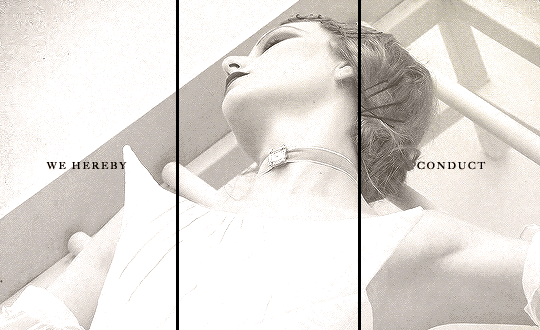
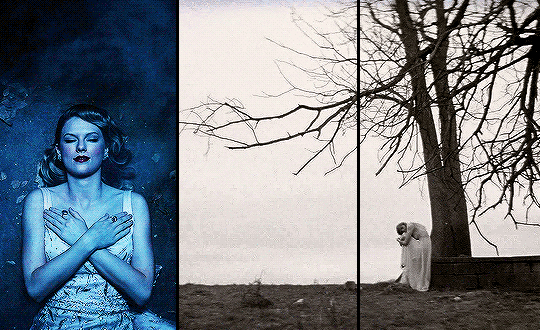

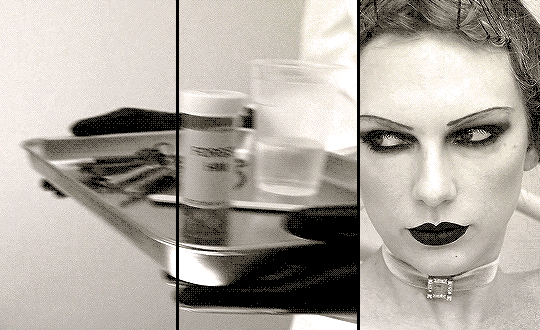
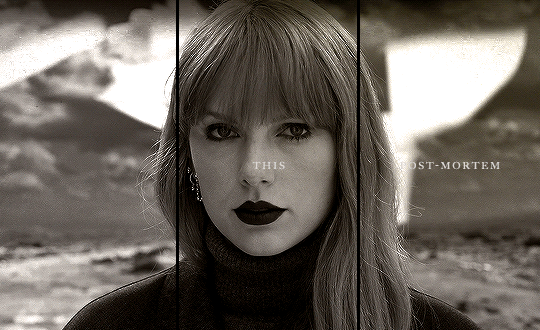
My beloved ghost and me Sitting in a tree D-Y-I-N-G
3K notes
·
View notes
Text
Poetic references in pop culture
After having discussed poetry and songs and lyric poetry, we can see how certain poetic elements have seemed to find their way in pop culture. The target audiences for poetry and pop culture might have been considered to be different in earlier times but now they tend to overlap. What earlier used to be limited to the field of literature is now, often used as an aesthetic in films, music, etc. I also feel that, while it expands poetry as a domain and exposes new people to it, it also, in some ways, loses its value when it is brought down to stand as a mere aesthetic that people use as captions for their social media posts. Nonetheless, we get to see poetry making its cameo in pop culture many a times.
Starting with something very closely linked to poetry- songs and lyrics. Many artists and songwriters tend to have a poetic style of writing. Now, of course, not all lyrics and songs can amount to being termed as poetry, but some can. Hozier would be my first prime example for this. His deep and poetic lyrics tend to reflect a strong sense of writing, which at the same time also get entangled with the aesthetic of pop culture. The deep complexities and metaphors, and euphemisms in his lyrics may not be understood by all which can make the listeners interpret their meaning in some other way. Songs like “Cherry Wine” and “Eat Your Young” talk about social issues but due to their interpretation in pop culture, their meanings have come down to revolve around the subject of love and relationships. While, at the same time, there is no denying that Hozier also makes love songs. However, a song like “Eat Your Young”, which serves as, what some might say, a “protest song”, based on political greed and the exploitation of younger generations, should not be reduced to merely having a sexual connotation to it. The song also references the classic Anglo-Irish writer, Jonathan Swift and his essay, “A Modest Proposal”, a famous protest against the British treatment of Ireland. This shows how poetry can get lost while serving to the whims and the fancies of pop culture. I also happened to stumble across this one blog on Tumblr, which adds more to this Hozier argument. I’ll attach a link for a clearer understanding.
Taking up a few more examples from music, particularly pop music, only recently we saw Taylor Swift release her 11th studio album, titled "The Tortured Poets Department”. Now the name in itself carries the essence of poetry. As a fan, of course my opinion would differ from the critiques or someone who’s not a fan, nonetheless, I enjoyed the album while also being aware of its different aspects that I did not enjoy as much. Particularly talking about “The Tortured Poets Department: The Anthology” I clearly saw more of the poetic edge to the album here, rather than on the standard version. Swift is inarguably one of the best songwriters of all time and there have been instances where she has written actual poems, or has poems turned into songs. Her other albums, particularly, “folklore” and “evermore” also carry the poetic side of Swift. Lyrics like,
“Now you hang from my lips, like the gardens of Babylon.
With your boots beneath my bed, forever is the sweetest con”
-Ivy, evermore
Or
“Take me to the lakes where all the poets went to die
I don’t belong, but my beloved neither do you
Those Windermere peaks look like the perfect place to cry
I’m signing off but not without my muse, no, not without you”
-The Lakes, folklore
…carry a heavy whiff of poetry and a poetic style of writing. When songs with such lyrics are consumed by a wide audience, the audience naturally looks into its deeper meanings. In reference to Taylor Swift and her widely spread fanbase, Swifties, who are known to speculate her work with full intensity and dedication, will of course be opened to a whole new world of poets and poetry through their consumption of pop culture. Taylor Swift also has quite a few self-written poems, namely, “Why She Disappeared”, and “If you’re anything like me”.
Speaking of pop artists and their poetry, we can not move on without mentioning Lana Del Rey. Apart from her complex lyricism, Lana, also has a poetry book called "Violet Bent Backwards over the Grass”. Lana Del Rey is not only celebrated as an artist, but has developed a whole aesthetic around her, which her poetic footprints follow. She has a huge impact on pop culture and is known to bring in a whole Sylvia Plath vibe to her work. People usually draw comparisons between the two. One of my favorite poems by Lana Del Rey, would have to be “Sportcruiser”:
“All of this circumnavigating the earth
Was to get back to my life
Six trips to the moon for my poetry to arise
I'm not a captain
I'm not a pilot
I write
I write”
Apart from music, poetry has been reflected in films as well. For an example, I would like to mention my favourite movie of all time, “Dead Poet’s Society”. From a dark academia aesthetic to Walt Whitman references, and the famous “Oh Captain! My Captain!” line, draws in interest from poetry and literature enthusiasts. I personally, started exploring Walt Whitman after I watched the movie. Shows such as “Dickinson” which revolves around the life of the famous poet, Emily Dickinson, also bring poetry to pop culture. Such shows also help bring out the sides of poets and their work which could not be revealed back in their times due to the society’s conservative nature.
Apart from movies centred around poetic or literature themes, many shows or films reference poems or poets in dialogues, arising the viewer’s curiosity. The movie “Maurice” has a dialogue, “I am an unspeakable of the Oscar Wilde sort.” which references the famous poet/author, Oscar Wilde, particularly dealing with the theme of homosexuality. Adaptations of classics, such as “Pride and Prejudice”, or “Little Women” also finds literature being introduced to pop culture. However, at the same time, such adaptations can also sometimes misrepresent these classics, which is usually called out by the literature enthusiasts, showing an interaction between two crowds and an integration of literature into pop culture. One of the recent examples, we can find is when Netflix announced the adaptation of “The Picture of Dorian Gray” by Oscar Wilde. (my favorite book of all time) Like many other, I, too, was disappointed to find out about the queer erasure done by Netflix by establishing a familial relationship between two characters: Dorian and Basil, who clearly have a romantic one in the original story, in the book.
Moreover, ever since social media came into the picture, poetry has been widely spread across pop culture. With poets like, Rupi Kaur, making their debut on talk shows like, “The Tonight Show With, Jimmy Fallon” and going on tours and various poetry related social media accounts taking over, the extent of integration of poetry with pop culture has been quite large and has changed the way people consume and create poetry, with specific emphasis on spoken poetry. What’s most interesting to note here is that the impact of this integration has not been one sided. Pop culture too has been shaped immensely through the introduction of poetry and other literature related themes, especially in the way it references, creates, and presents its content.



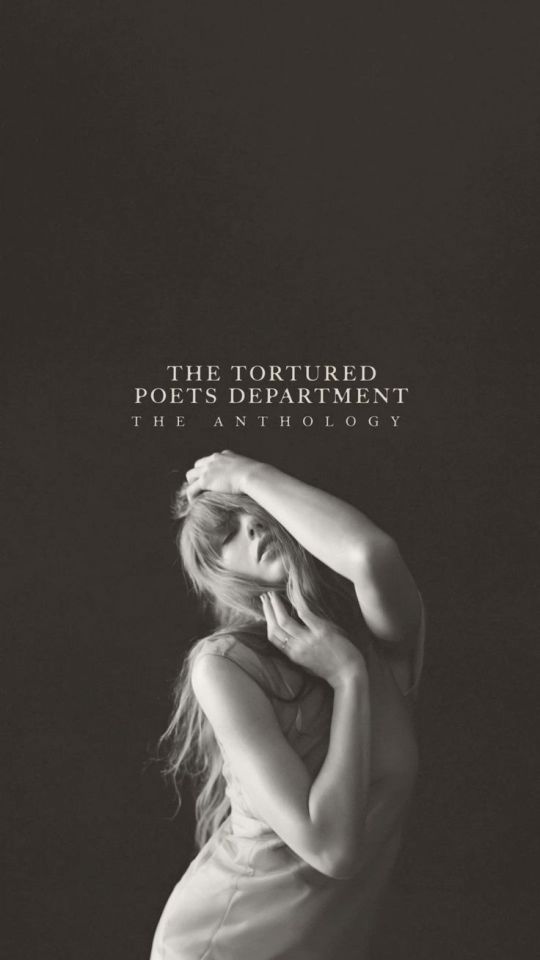


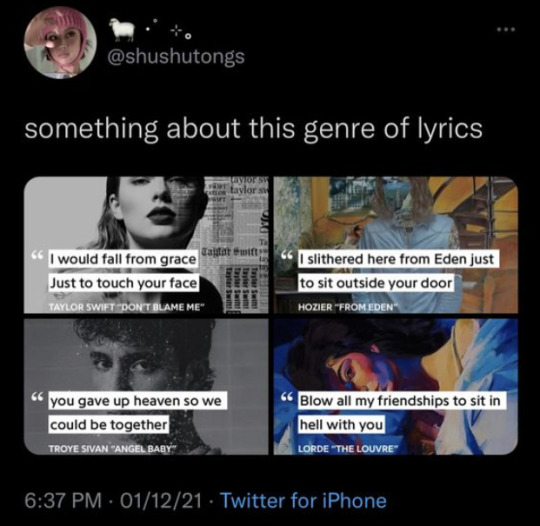
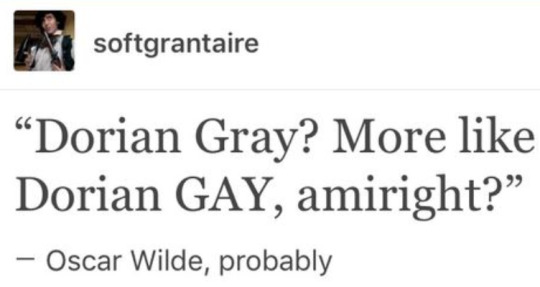
#poetry#literature#poets#pop culture#pop#lyric poetry#lyrics#songs#pop songs#alt#indie#hozier#taylor swift#dark academia#lana del rey#the tortured poets department#ttpd#folklore#evermore#the lakes#cowboy like me#lyricism#songwriters#songwriting#writing#violet bent backwards over the grass#eat your young#cherry wine#aesthetic#poetry aesthetic
3 notes
·
View notes
Text
Theory of Lyric Poetry
Going back to our main subject of poetry, this blog is going to talk about “Lyric Poetry”. Lyric Poetry refers to a short poem, often with songlike qualities, that expresses the speaker’s personal emotions and feelings. It can also be described as a first-person poem. The concept of lyric poetry is commonly found in contemporary forms of art, particularly, literature and music, in different genres. The etymology of the word, “lyric” can be traced back to the Greek word “lura”, which means "lyre”, a musical instrument often used to accompany the readings of lyric poems. The Greeks had a very technical meaning for lyric poetry and called it “melic poetry” primarily because it used to be sung. They used to follow a strict distinction between lyric or melic poets and the writers of plays. Lyric poetry then followed a pathway from the Romans to China, into the Medieval verse, and then from 16th century onwards, it persists even today.
In the 20th century, lyric poetry became the dominant poetry type in America, Britain and Britain colonies. A. E. Housman, Walter de la Mare, Edmund Blunden, and Rabindranath Tagore were among the many famous poets who relied on this genre of poetry. However, at the same time, there were many who questioned Lyric Poetry as well. The modernist poets such as, Ezra Pound, T. S. Eliot, and many more, rejected this kind of poetry on the basis of its heavy reliance on the melodious language, rather than on the complexity of thought. Lyric poetry also gave rise to “confessional poetry”, which took the main stage in American poetry in the middle of the 20th century. Poets started writing about their relationships, domestic life, and many other personal and sensitive issues. Sylvia Plath and Anne Sexton, make it to the list of such poets.
If we view the field of music, we come across many modern-day songwriters across various music genres to be following the same writing technique. Personally speaking, as someone who writes as well, I always draw my attention to the lyrics of a song prior to anything else. I think that’s why my personal favourite artists come around to be those who are primarily known for their songwriting capabilities, such as Taylor Swift, Lana Del Rey, or LORDE, and many more. I also feel like, many people are drawn to such songwriters/artists because these artists tend to write about their private life and affairs which draws human interest. People like to read about people, especially when these people hold some sort of prominence or significance.
And this can also be applied to the concept of Lyric Poetry, because it tends to make the poet sound confessional in their work which tends to reflect a sense of relatability onto the readers or listeners. I also feel like this is one of the most vulnerable forms of writing because you truly let yourself reflect in what you write. The emphasis on the poet’s state of mind and personal themes is what makes Lyric Poetry stand relevant even today and it’s interesting to see how it continues to evolve ever since its origin.
References:
#lyrics#Lyric Poetry#Poetry#Poems#literature#poems and quotes#poets#confessional poetry#writing#greek#history of lyric poetry#A. E. Housman#Walter de la Mare#Edmund Blunden#Rabindranath Tagore#Ezra Pound#T. S. Eliot#Sylvia Plath#Anne Sexton#modernists#taylor swift#lana del rey#lorde#booktok#lyricist#lyricis#literature enthusiasts#literature lover#songwriters#wikipedia
3 notes
·
View notes
Photo
oh the hand flex scene, you'll always be famous

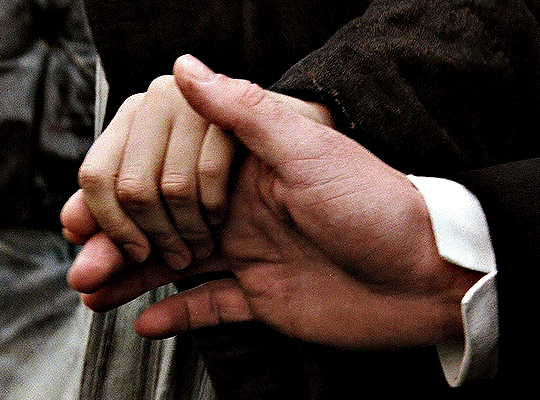
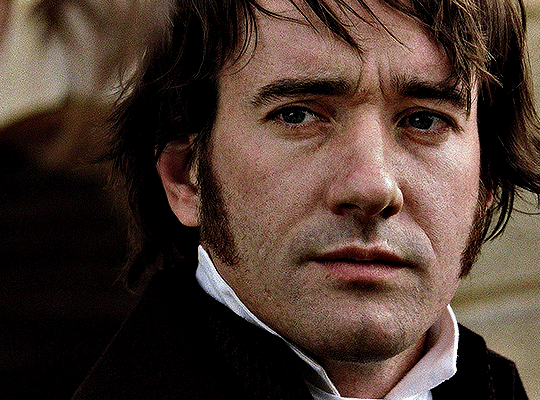
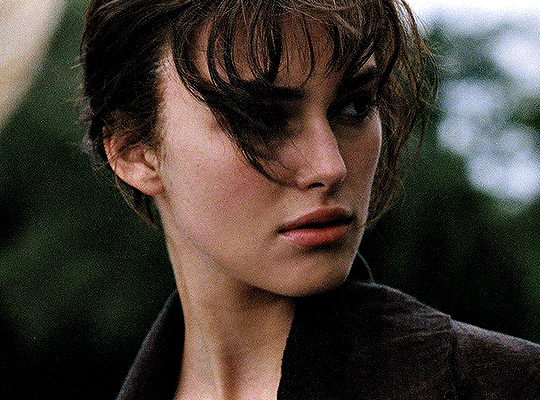
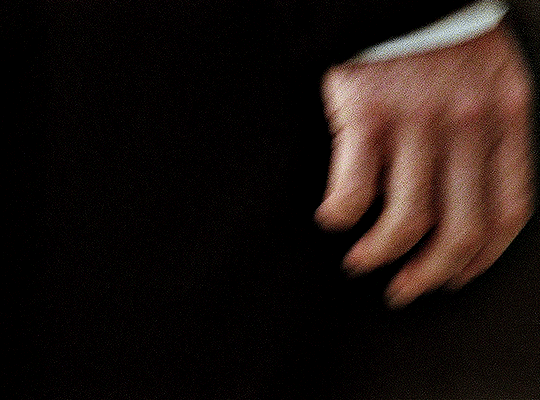
PRIDE & PREJUDICE (2005) dir. Joe Wright
9K notes
·
View notes
Text
I wish more people were outraged about this. More people should be. In the span of what? A month? Netflix has not only cancelled Dead Boy Detectives, an incredible show with great acting, writing, film quality, etc... and characters that are queer, but they've announced a "modern retelling" of The Picture of Dorian Gray by Oscar Wilde, you know, the book that was so gay it was used as evidence in the author's sodomy trial, and they have chosen to make Basil and Dorian Gray siblings. I have seen so little talk about it, because people are feeling exhausted and defeated, but you know what? Exhausted silence only sends the message to this bloody company that they can continue to do this type of shit and nothing bad will come of it because people don't care enough to fight back. What choice do we have but to fight? We have to fight and show people that we won't tolerate this kind of thing. Dead Boy Detectives was a brilliant show, and this isn't the first time such an incident has happened. Dorian Gray does not deserve this atrocious "modern retelling". I am sick of being met with silence and really, it's overdue that we let these companies know how exactly they can fuck off. I so desperately want to see given to these works the same treatment that people gave to OFMD when it got cancelled. No one else is going to do it for you. Not enough people realise how strong their individual voice can be if they stand up and shout it out. Let's show these companies what fucking happens when they pull these kinds of stunts. Every action has a consequence.
765 notes
·
View notes
Text
The Classics- Important or Overhyped?
TW: p3dophilia
Many pieces of literature have been termed as, “classics” and are said to possess a high quality which makes them a ‘must-read’. A timeless quality, good writing, renowned authors, universal themes and much more determines what can be classified as a “classic”. Some examples of classics include, “Pride and Prejudice” by Jane Austen, “Wuthering Heights” by Emily Brontë, Shakespeare, “The Great Gatsby” by F. Scott Fitzgerald, “Little Women” by Louisa May Allcot, “War and Peace” by Leo Tolstoy, and many more. However, are the classics worth the read, or are they overrated? And does, not having read the classics make you any less of a reader from those who have? These are some questions posed in front of readers, in the field of literature.
I am personally very selective when it comes to various genres, but my prime focus rests on fiction, and that genre in itself is so wide that my selectivity in picking which books to read does not necessarily limit my options. Only recently, I started getting into the classics. While, I haven’t read all the classics and the ones that I have so far, I read those in my own time and will, but to be very honest, I did feel a little pressure to read and LIKE the classics, only because there is a notion out there, that, that is how it should be. “You must know Shakespeare”, “How can you not cry over the Romeo and Juliet Tragedy”, “Everyone loves Jane Austen”, “The Great Gatsby is one of the most important pieces of literature.” I mean, how much can you boast about reading “The Song of Achillies” in front of a crowd that reads Homer?
While there is no denying that The Song of Achillies is a great book, but would most people consider it to be ‘greater’ than the “Iliad”? Despite not having read Homer (though, I plan to afterwards), but having read The Song of Achillies, I still won’t say that it’s better than the original classic. Maybe my opinion would change after reading Homer, maybe it won’t, but the underlying fact remains that there is some sort of societal pressure that makes you place the classics at some place higher in literature hierarchy.
Another reason why the classics are ‘the classics’, is because they are said to reflect timeless societal themes, but considering that societal norms are ever-evolving, how long will this characteristic last? I feel like, overtime, classics lose this timeless value, but people continue to read them to reinvoke a sense of nostalgia, or they focus on its other aspects. For instance, I would not revisit or recommend “Pride and Prejudice” because it talks about social class and familial relations, but I would for the complexity of Mr. Darcy’s character and his romantic plot with Elizabeth Bennet. But then again, my first argument for recommending “Little Women” by Louisa May Alcott, would be feminism and how the book was ahead of its time primarily due to this social factor.
While such classics do set a good precedent for contemporary times, while reflecting breaking traditional roles back in the day, some don’t. In fact, some may influence or inculcate an orthodox perspective in the modern day and life. “The Great Gatsby”, for example, may be regarded as one of the greatest pieces in American Literature, and while the plot can be really intense and grasping but was life in America, in the 1920’s really that glamorous, as shown in the book? Of course it was, but only if you were rich and white, just like the main characters in the books were. At the same time, I would not lie by saying that I don’t enjoy participating in the “Was it a dream or a lie?” discussion that comes from this book.
As for poetry, things get a little more complex, as modern poetry isn’t as celebrated as classic poetry. Naturally, when someone asks me to think of a poet, the first names that come to my mind are, “Sylvia Plath”, “Edgar Allan Poe”, “Walt Whitman”, rather than “Rupi Kaur”. While this doesn’t make Rupi Kaur any less of a poet, but it speaks more about the value of poetry in the modern world.
Moreover, some classics and their authors are deemed to be problematic. For instance, “Lolita” by Vladimir Nabokov, showcases a grown man’s perverted thoughts for a 12-year-old girl. Owing to revolving around the sensitive topic of paedophilia, the book is deemed to be problematic, yet at the same time it is considered to be a very well written piece of literature. This sparks another debate of, “the Art vs the Artist”, which we shall talk about in upcoming blogs.
Another argument which comes up in this debate over the classics is that they are difficult to read since many of them are written in Shakespearean English, or Latin, or other classical languages which is not understood by many. However, multiple translated versions of these classics also exist for those who want to read them but can’t owing to this language barrier. At the same time, many also argue that such classics are important in terms of preserving the classical languages.
So, while literature presents a wide variety of genres to read about, some are considered to be a must-read, primarily owing to the international recognition the work and the authors have received. While my interest in classics is increasing as I read more and more but at the same time, I would never refuse to accept how much I love reading modern day works as well, such as, “Red, White and Royal Blue” by Casey McQuiston, or “The Secret History” by Donna Tart and many more. At the end of the day, your taste in different art forms, such as, music, or literature, is subjective and you shouldn’t shame anyone for theirs, of course, unless what they’re into is actually really bad. XD
#classics#classical literature#literature#books & libraries#books#jane austen#pride and prejudice#mr darcy#elizabeth bennet#emily bronte#wuthering heights#the great gatsby#william shakespeare#romeo and juliet#war and peace#leo tolstoy#the song of achilles#tsoa#homer#the iliad#slyvia plath#walt whitman#edgar allan poe#lolita#vladimir nabokov#rupi kaur#poets#poetry#little women#louisa may alcott
1 note
·
View note
Text
Classic Poets and Modern Songwriters
As we delve further into the domain of “Classic poetry and Modern Lyricism”, let’s take a look at some of the world's most renowned poets and celebrated lyricists/songwriters:
Classic Poets
William Wordsworth
William Wordsworth was an English Romantic poet who, with Samuel Taylor Coleridge, helped to launch the Romantic Age in English literature with their joint publication Lyrical Ballads.
Some of his famous works include: “I Wandered Lonely as a Cloud”, “The World is Too Much With Us”, and more.
Emily Dickinson
Emily Elizabeth Dickinson was an American poet. Little-known during her life, she has since been regarded as one of the most important figures in American poetry. Dickinson was born in Amherst, Massachusetts, into a prominent family with strong ties to its community.
Some of her famous works include: “I taste a liquor never brewed”, “Because I could not stop for Death”, and more.
Robert Frost
Robert Lee Frost was an American poet. Known for his realistic depictions of rural life and his command of American colloquial speech, Frost frequently wrote about settings from rural life in New England in the early 20th century, using them to examine complex social and philosophical themes.
Some of his famous works include: “The Road Not Taken”, “Fire and Ice”, and more.
Sylvia Plath
Sylvia Plath was an American poet, novelist, and short story writer. She is credited with advancing the genre of confessional poetry and is best known for The Colossus and Other Poems, Ariel, and The Bell Jar, a semi-autobiographical novel published shortly before her suicide in 1963.
Some of her famous works include: “The Bell Jar”, “Daddy”, and more.
Oscar Wilde
Oscar Fingal O'Fflahertie Wills Wilde was an Irish poet and playwright. After writing in different forms throughout the 1880s, he became one of the most popular playwrights in London in the early 1890s.
Some of his famous works include, “A Fragment”, “The Ballad of Reading Gaol”, and more.
John Keats
John Keats was an English poet of the second generation of Romantic poets, along with Lord Byron and Percy Bysshe Shelley. His poems had been in publication for less than four years when he died of tuberculosis at the age of 25.
Some of his famous works include, “Ode on a Grecian Urn”, “To Autumn”, and more.
Other famous classic poets include, Pablo Neruda, Maya Angelou, Edgar Allan Poe, Walt Whitman, T. S. Eliot, and many more.
Modern Songwriters
Taylor Swift
Taylor Alison Swift is an American singer-songwriter. Known for her biographical songwriting, artistic reinventions, and cultural impact, Swift is a leading figure in popular music and the subject of widespread public interest.
Some of her famous works include, “folklore”, “The Tortured Poets Department”, and more.
Lana Del Rey
Elizabeth Woolridge Grant, known professionally as Lana Del Rey, is an American singer and songwriter. Her music is noted for its cinematic quality and exploration of tragic romance, glamour, and melancholia, with frequent references to pop culture and 1950s–1970s Americana.
Some of her famous works include, “Violet Bent Backwards Over Grass” “Norman Fucking Rockwell”, and more.
LORDE
Ella Marija Lani Yelich-O'Connor, known professionally as Lorde, is a New Zealand singer and songwriter. She is known for her unconventional style of pop music and introspective songwriting. Lorde expressed interest in performing at local venues in her early teens.
Some of her famous works include, “Melodrama” “Pure Heroine”, and more.
Hozier
Andrew John Hozier-Byrne, known professionally as Hozier, is an Irish musician, singer and songwriter. His music primarily draws from folk, soul and blues, often using religious and literary themes and taking political or social justice stances.
Some of his famous works include, “Wasteland, Baby”, “Hozier”, and more.
Sufjan Stevens
Sufjan Stevens is an American singer, songwriter, and multi-instrumentalist. He has released ten solo studio albums and multiple collaborative albums with other artists. Stevens has received Grammy and Academy Award nominations.
Some of his famous works include, “Carrie & Lowell”, “Call Me by Your Name: Original Motion Picture Soundtrack”, and more.
Frank Ocean
Frank Ocean is an American singer, songwriter, and rapper. He has been credited by several music critics as a pioneer of the alternative R&B genre.
Some of his famous works include, “Blonde”, “Channel Orange”, and more.
Some other contemporary songwriters include, Adele, Justin Vernon, Lady Gaga, Olivia Rodrigo, Paul McCartney, Elton John, Eminem, and many more.







#taylor swift#Emily Dickinson#Sylvia Plath#Robert Frost#shakespeare#william wordsworth#Oscar Wilde#folkore#the tortured poets department#Blonde#Born to Die#The Bell Jar#The Road Not Taken#Hozier#wasteland baby#John Keats#oh captain my captain#walt whitman#poetic#poets#classics#songwriters#pop#lyrics
5 notes
·
View notes
Text
Battle of the Songs and the Sonnets- Introduction
From “Shall I compare thee to a summer’s day?” to “It’s a cruel summer, with you”, poetry has evolved over time. The domain of poetry has expanded towards the domain of songs and lyricism, many of which can be found in the contemporary music genres, including pop. However, both of them have co-existed since decades and are known to share similar characteristics. To create and understand a distinction, we can pick apart their formats, their uses, the different time periods in which they were written and the person who wrote them as well.
Poetry is one of the many forms of literature and literary art that relies on the aesthetic value of words to convey a message, rather than expressing something in a straightforward manner.
Poetry has often relied on various euphemisms and metaphors in its expressions. Poets are known to use various poetic devices, such as assonance, alliteration, euphony and cacophony, onomatopoeia and many more.
Shakespeare’s work is known to use alliteration. This can be acutely found in Romeo and Juliet but in his poems as well.
“Sonnet 5” by William Shakespeare, the "b" sound in beauty, bareness and bereft set a romantic tone. In the last line, the "s" substance and sweet provides a soothing rhythm.
“Beauty o'er-snowed and bareness every where:
Then were not summer's distillation left,
A liquid prisoner pent in walls of glass,
Beauty's effect with beauty were bereft,
Nor it, nor no remembrance what it was:
But flowers distilled, though they with winter meet,
Leese but their show; their substance still lives sweet.”
Other examples of poetic devices, such as onomatopoeia can be found in Edgar Allan Poe’s work, “The Bells”
“How they clang, and clash, and roar”
Poe's poetry is always filled with sensory detail, quite often unsettling and frightening. And by using poetic devices such as onomatopoeia, where words mimic the actual sounds we hear, his work stands true to its reputation.
Furthermore, poetry is also know to follow a rhythmic pattern, which we often call, a “rhyming scheme”. Most of the poems follow a typical rhyming scheme of, “a b a b”, but it varies from poem to poem. However, there are many poems out there which do not follow any rhyming scheme, so in that case we tend to refer to that piece as a “free verse”.
Now this particular rhyming feature overlaps with the domain of lyricism and songs. Therefore, to create a distinction, emerges one stark contrast, which is, that lyrics are solely created for a musical purpose, and once we delve into this characteristic we can find more dissimilarities and even similarities.
Lyrics, in simple terms are words that make up a song. While poetry is made up of lines and stanzas; lyrics form the verses and the chorus of a song.
Therefore, in order to be considered as a song, lyrics must be sung while being supported by a musical instrument or a vocal accompaniment. However, in modern times, many poets use a background instrumental music while reciting their pieces at a show, open mic, etc., to make their recital more dramatic and emphatic. But then again, reciting is different than singing.
Moreover, poetry has no standard or universal structure, but lyrics are composed to fit specific parts of a musical piece. Furthermore, poetry often relies on an indirect approach to convey a message which poets tend to do through complex metaphors, euphemisms and vivid imagery. This also makes poetry a little hard to understand and a casual reader may not see through the poet’s vision. However, this is not the case for lyrics as songs and music are something that appeal to anyone and everyone. They do not necessarily, require a complete sense of literacy for understanding and comprehension. This is primarily because lyrics use a direct approach in conveying their message. At the same time, what cannot be denied is the fact that there are many lyrics which carry a hint of poetic devices in them and many artists are known for their metaphorical songwriting techniques.
In Taylor Swift’s, “Cruel Summer”:
“And it's new, the shape of your body
It's blue, the feeling I've got
And it's ooh, whoa, oh
It's a cruel summer”
metaphors like “It’s a cruel summer” suggest that the summer is emotionally harsh and difficult, highlighting the intensity of the relationship’s challenges.
Traces of symbolism can also be found in the song.
“Devils roll the dice, angels roll their eyes
What doesn't kill me makes me want you more”
This represents the unpredictable nature of the relationship and the judgement from others.
So whether it’s Sonnet 5 or Cruel Summer, at the end of the day, both poems and lyrics are means used to convey a message to the reader or the listener and as someone who understands and enjoys both, I love to draw a comparison between the two while consuming these different forms of art.
References:
#poetry#lyrics#songs#sonnet#william shakespere#taylor swift#literature#song writing#edgar allan poe#cruel summer#poetic#metaphor#books & libraries#music#symbolism#onomatopoeia#alliteration#follow#booklr#writing
4 notes
·
View notes


